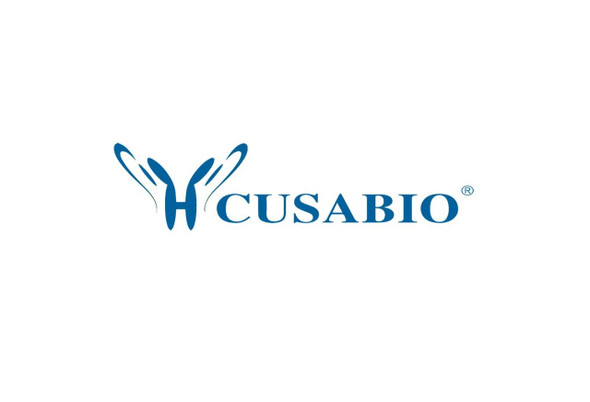Cusabio Virus & Bacteria Recombinants
Recombinant Sudan ebolavirus Envelope glycoprotein (GP) , partial | CSB-MP742487SRE
- SKU:
- CSB-MP742487SRE
- Availability:
- 18 - 28 Working Days
Description
Recombinant Sudan ebolavirus Envelope glycoprotein (GP) , partial | CSB-MP742487SRE | Cusabio
Alternative Name(s): GP1,2 Short name: GP
Gene Names: GP
Research Areas: Others
Organism: Sudan ebolavirus (strain Human/Uganda/Gulu/2000) (SEBOV) (Sudan Ebola virus)
AA Sequence: QTNTKATGKCNPNLHYWTAQEQHNAAGIAWIPYFGPGAEGIYTEGLMHNQNALVCGLRQLANETTQALQLFLRATTELRTYTILNRKAIDFLLRRWGGTCRILGPDCCIEPHDWTKNITDKINQIIHDFIDNPLPN
Source: Mammalian cell
Tag Info: N-terminal 6xHis-tagged
Expression Region: 502-637aa
Sequence Info: Partial
MW: 19.4 kDa
Purity: Greater than 90% as determined by SDS-PAGE.
Relevance: GP1 is responsible for binding to the receptor(s) on target cells. Interacts with CD209/DC-SIGN and CLEC4M/DC-SIGNR which act as cofactors for virus entry into the host cell. Binding to CD209 and CLEC4M, which are respectively found on dendritic cells (DCs), and on endothelial cells of liver sinusoids and lymph node sinuses, facilitate infection of macrophages and endothelial cells. These interactions not only facilitate virus cell entry, but also allow capture of viral particles by DCs and subsequent transmission to susceptible cells without DCs infection (trans infection). Binding to the macrophage specific lectin CLEC10A also seems to enhance virus infectivity.
Reference: "The virion glycoproteins of Ebola viruses are encoded in two reading frames and are expressed through transcriptional editing."Sanchez A., Trappier S.G., Mahy B.W.J., Peters C.J., Nichol S.T.Proc. Natl. Acad. Sci. U.S.A. 93:3602-3607(1996)
Storage: The shelf life is related to many factors, storage state, buffer ingredients, storage temperature and the stability of the protein itself. Generally, the shelf life of liquid form is 6 months at -20?/-80?. The shelf life of lyophilized form is 12 months at -20?/-80?.
Notes: Repeated freezing and thawing is not recommended. Store working aliquots at 4? for up to one week.
Function: GP1 is responsible for binding to the receptor(s) on target cells. Interacts with CD209/DC-SIGN and CLEC4M/DC-SIGNR which act as cofactors for virus entry into the host cell. Binding to CD209 and CLEC4M, which are respectively found on dendritic cells (DCs), and on endothelial cells of liver sinusoids and lymph node sinuses, facilitate infection of macrophages and endothelial cells. These interactions not only facilitate virus cell entry, but also allow capture of viral particles by DCs and subsequent transmission to susceptible cells without DCs infection (trans infection). Binding to the macrophage specific lectin CLEC10A also seem to enhance virus infectivity. Interaction with FOLR1/folate receptor alpha may be a cofactor for virus entry in some cell types, although results are contradictory. Members of the Tyro3 receptor tyrosine kinase family also seem to be cell entry factors in filovirus infection. Once attached, the virions are internalized through clathrin-dependent endocytosis and/or macropinocytosis. After internalization of the virus into the endosomes of the host cell, proteolysis of GP1 by two cysteine proteases, CTSB/cathepsin B and CTSL/cathepsin L presumably induces a conformational change of GP2, allowing its binding to the host entry receptor NPC1 and unmasking its fusion peptide to initiate membranes fusion.
Involvement in disease:
Subcellular Location: GP2: Virion membrane, Single-pass type I membrane protein, Host cell membrane, Single-pass type I membrane protein, Note=In the cell, localizes to the plasma membrane lipid rafts, which probably represent the assembly and budding site, SUBCELLULAR LOCATION: GP1: Virion membrane, Peripheral membrane protein, Host cell membrane, Peripheral membrane protein, Note=GP1 is not anchored to the viral envelope, but forms a disulfid-linked complex with the extravirion surface GP2, In the cell, both GP1 and GP2 localize to the plasma membrane lipid rafts, which probably represent the assembly and budding site, GP1 can also be shed after proteolytic processing, SUBCELLULAR LOCATION: GP2-delta: Secreted
Protein Families: Filoviruses glycoprotein family
Tissue Specificity:
Paythway:
Form: Liquid or Lyophilized powder
Buffer: If the delivery form is liquid, the default storage buffer is Tris/PBS-based buffer, 5%-50% glycerol. If the delivery form is lyophilized powder, the buffer before lyophilization is Tris/PBS-based buffer, 6% Trehalose, pH 8.0.
Reconstitution: We recommend that this vial be briefly centrifuged prior to opening to bring the contents to the bottom. Please reconstitute protein in deionized sterile water to a concentration of 0.1-1.0 mg/mL.We recommend to add 5-50% of glycerol (final concentration) and aliquot for long-term storage at -20?/-80?. Our default final concentration of glycerol is 50%. Customers could use it as reference.
Uniprot ID: Q7T9D9
HGNC Database Link: N/A
UniGene Database Link: N/A
KEGG Database Link: KEGG
STRING Database Link: N/A
OMIM Database Link: N/A









